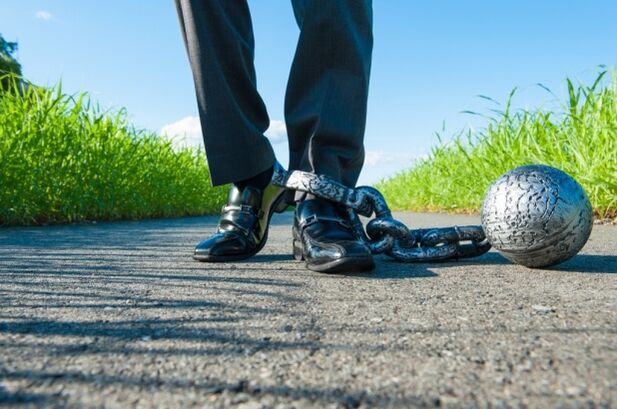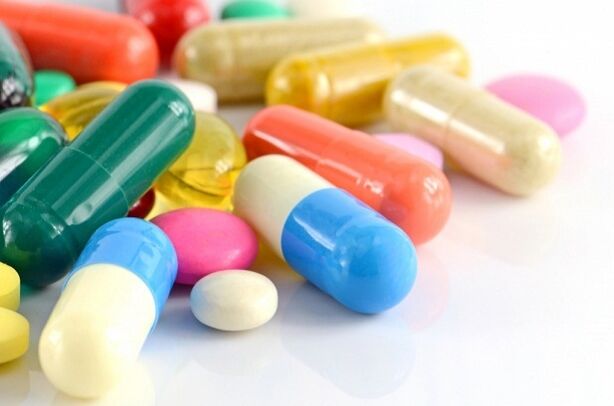Physical pain is an unpleasant and multifaceted sensation. The presence of pain factors signals that there is a problem in the body. With the localization and description of the type of pain the patient is experiencing, the specialist will be able to identify the cause and its causes. If there is a suspicion of the presence of varicose veins, then for accurate differentiation of the problem, a general clinical study (blood, urine) and, possibly, instrumental examination will be required.

But in order to independently determine the existence of the problem and present it to a specialist, it is important to deal with it against a background of common fatigue or malaise. What kind of pain does a person with varicose veins experience? What are their specifics? And what treatment might occur in this case? You will find answers to these and other questions in our article.
Pain in the legs with varicose veins: symptoms and causes
Pain with varicose veins is not the only manifestation of the disease, but causes serious discomfort. How severe is leg pain with varicose veins? Of course, there are differences in the level of sensitivity of individuals, but the intensity of most pain syndromes is due to the peculiarity of the actual pathological process.
Expert opinion
Pain in the legs with varicose veins includes a variety of unpleasant feelings: pain, cramping, cramping, burning, swelling and pressure along the bed of veins. They are sudden, painful and throbbing characters.
As a rule, the pain syndrome is felt more or less acutely, depending on the position of the body, whether it is loaded with a load at this time or not. Pain also has features such as time dependence. This means that with the advent of a certain time in the day, the pain syndrome begins to increase. So, severe pain with varicose veins occurs starting in the second half of the day. Uterine varicose veins and varicose veins in the small pelvis, where severe pain is often felt in the lower abdomen, also have a similar dependence on time.
Dangerous diseases such as varicose veins cover the entire limb and can cause pain in the lower leg joints, calf muscles and popliteal cavity. The person experiences the most acute unpleasant sensation in the area of neurovascular formation. In areas where the vascular bundle is located more superficially, leg edema can also occur. This is another sign that varicose veins are progressing, and there is already a violation of lymph outflow. Does the swelling make your foot pain worse? Of course YES. Swelling, formed as a result of disturbances in the venous system in the lower part of the leg, is characterized by compaction in the affected vessels and even an increase in local temperature. A combination of symptoms such as pain in the vein and its deformation, persistent edema, persistent changes and trophic changes indicate stage II varicose veins. This stage is considered an advanced form of the disease. To avoid it, it is important to know the factors that provoke this vascular disease and its exact symptoms.

The presence of even one of the following symptoms should alert and prompt you to seek medical advice:
- a feeling of heaviness in the legs and a feeling of muscle weakness;
- tingling and burning along the veins;
- feelings of internal pressure or "bloating";
- appearance of telangiectasias and increased venous pattern;
- deformed vein lumps;
- trophic skin changes;
- old incurable wounds on the feet;
- edematous phenomenon;
- numbness of the lower limbs;
- leg muscle spasms;
- pain syndrome.
No disease occurs by itself. There are definitely factors that can be called provocative. Varicose veins are no exception, so their appearance can be caused by:
- hereditary tendencies;
- congenital weakness of connective tissue and vascular walls;
- sedentary lifestyle and static sports;
- excessive physical activity;
- forced standing or sitting for prolonged periods (e. g. , at work);
- improper nutrition and overweight;
- the presence of bad habits;
- pregnancy and childbirth;
- hormonal imbalances;
- soft tissue injuries;
- surgical intervention;
- liver disease.
Based on the presence of these factors in a person, he is included in the risk group for developing vascular pathology. How to reduce the risk of developing this disease? What can you do if you start experiencing pain in your legs? How and how to relieve or reduce pain in the legs with varicose veins? How to help yourself to reduce the symptoms of varicose veins and how to treat blood vessels, more in our article.
Leg pain with varicose veins: prevention and treatment

Before starting to get involved in the prevention and treatment of vascular diseases, it is good that we understand a little about why there is pain in the legs with varicose veins? Pain in the legs with varicose veins occurs due to the fact that irreversible pathological processes occur in the veins, under the influence of which they stretch and deform, blood circulation is disrupted and venous stasis occurs. Therefore, preventive and treatment measures will be aimed at strengthening the vein walls, and not exclusively to relieve pain. With varicose veins, the feet need special care and attention. What to do when the first signs of pathological development begin to appear?
The first thing to do when something is painful is to see a doctor.
If, after several times of manipulation, a specialist finds out that the pain is caused by varicose veins, then the appropriate treatment will be selected. This will help get rid of the manifestations of varicose veins and improve the quality of life, because varicose veins are not a sentence.
In the treatment of any disease, the first is a proposal to change lifestyle. It is impossible to be a healthy person with a passive lifestyle, bad habits, imbalances in daily routines, and improper diet. Therefore, the first step that will help relieve pain in the legs with varicose veins will be a qualitative change and the formation of a healthy lifestyle. It is necessary to create harmony in the way of work and rest. Workforce should not be associated with excessive physical and mental stress. Rest must include a full and healthy night’s sleep. Leisure time should be spent actively - staying in the fresh air and playing sports. The latter include swimming, walking racing, aerobics. Anything that doesn’t hit and isn’t burdened with a strong physical activity class.
Expert opinion
In order for the venous wall to be strong and elastic, it is important to eat properly. Here, depending on the stage of the disease and its dynamics, a specialist can offer a therapeutic diet. The main principle built is balance. The diet should include foods enriched with vitamins, fiber, plant fiber, flavonoids, etc. It is useful to eat lean chicken or beef, as well as lean white fish, berries and fruits with vitamin C, dried fruits (raisins, dates), almost all vegetables, nuts and legumes, cereals, as well as natural non -carbonated beverages. Fried, salted, smoked and spicy should be excluded.
If, for whatever reason, an additional source of nutrients is needed, then a specialist will prescribe it - a complex of vitamins and extracts of venotonic plants, which act simultaneously in several directions, due to the content of natural active components in its composition. Taking this drug, you can strengthen and clean the walls of veins, improve blood circulation, reduce capillary permeability and fragility.
Further, depending on which specialist determines the stage of the disease, it also depends on how the disease will be treated - conservatively or radically.
Conservative treatments include:
- taking medication;
- use of external products;
- physiotherapy;
- wear medical compression socks.

The use of the drug will stop damage to the venous bed, control the level of blood viscosity and the formation of blood clots, and will also have antispasmodic and anti-inflammatory effects. Taking the drug in combination with the use of local medications will increase the positive effect on the veins. You can use ointments or creams for pain with varicose veins not only for treatment, but also for prevention. Its action will depend on the composition of the product. The components found in it can be synthetic and natural. Products with synthetic compositions are used not only to relieve swelling, fatigue and pain, but also to recover from vein surgery. Varicose veins in the early stages, during pregnancy or at risk can be prevented using products with natural composition. Its effectiveness is directly related to the natural active ingredients included in the composition. Foot cream with chestnut extract, green tea and ginkgo biloba has a venotonic effect, which will help relieve pain in the legs with varicose veins. Thanks to the use of this cream, you can relieve inflammation and pain, as well as improve the appearance of the skin.
Medical gymnastics will make an important contribution to the improvement of the venous system.
Daily exercise, no harder than morning exercise, will help eliminate the unpleasant sensation of numbness in the limbs, cramps and heaviness. The training set is selected individually, taking into account the possibilities and circumstances. At home, the most popular are the "Bicycle", "Scissors" and the stand on the shoulder blades. In an office environment, sitting at a desk, you can also stretch your legs by simply twisting the legs, bending and flexing the toes.
To improve blood circulation, relieve unpleasant symptoms such as swelling and pain, it is recommended to wear a compression shirt every day. The type of product and its degree of compression are selected taking into account the dynamics of the disease.
Radical therapy includes invasive and minimally invasive methods. Specialists try to use the latter treatment, if conservative treatment does not help or the condition is difficult.
Take care of your health!




































